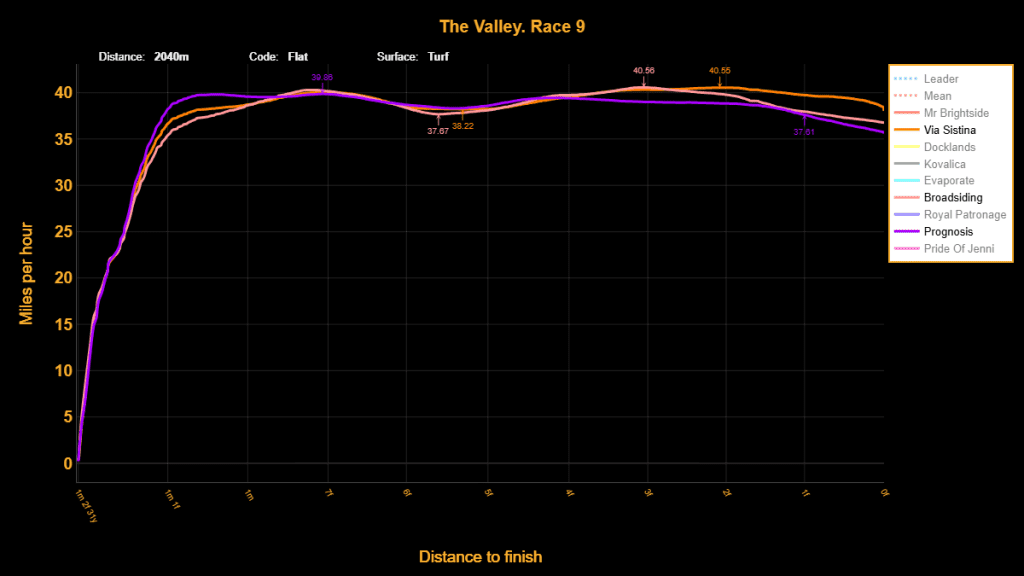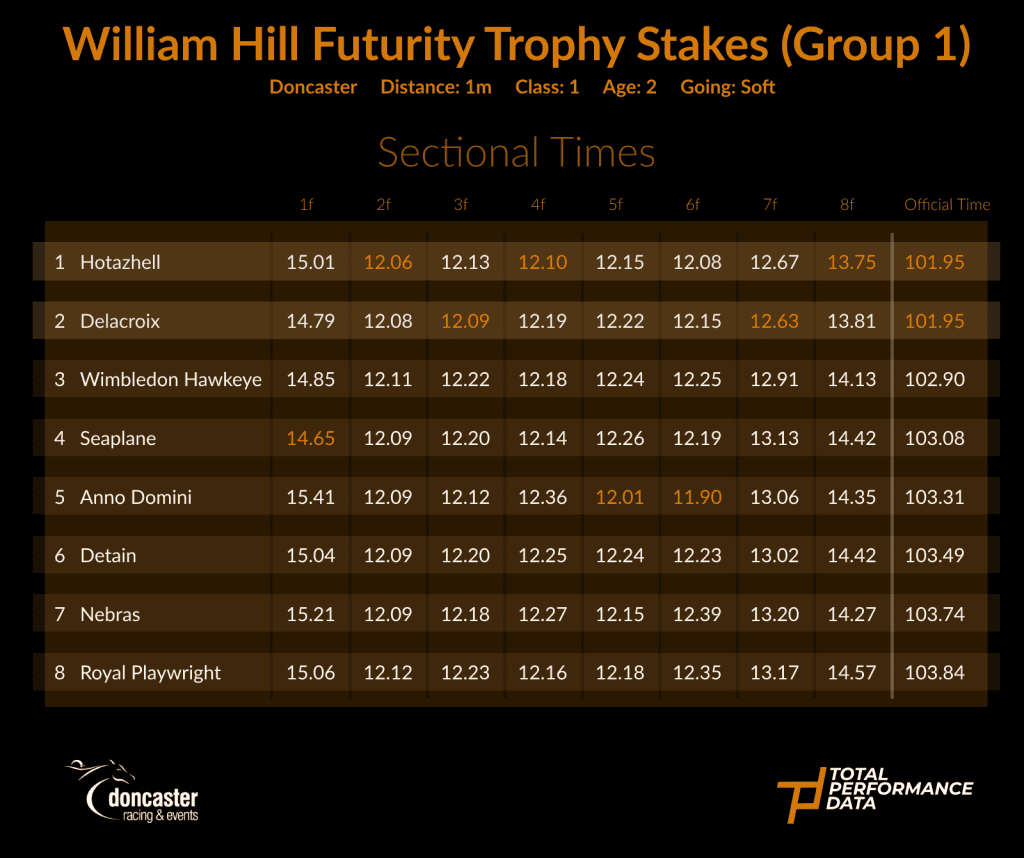By Adam Mills
The purpose of these blog posts is to ask what if? I wear glasses because my eyes don’t work properly and so having access to the race data provided by TPD can help me to answer that question. In some cases, the data will confirm the visual impression. That was certainly true this weekend in the Cox Plate, where if anything, the data upgraded the performance of Via Sistina even further. In other cases, as with the Futurity Stakes at Doncaster, it might point to the fact that the 5th placed horse could be the one to look forward to most in 2025.
Cox Plate, Moonee Valley


It’s not very often that a Group 1 race is won by 8-lengths. That performance would be special enough, but the fact that Via Sistina was able to do this in a time that broke the track record held by Winx, makes this even more remarkable. At a top speed of 40.58 mph, she produced a devastating burst of speed under James MacDonald and on this evidence she deserves her place at the head of the market for the Melbourne Cup. The speed data collected by tripleSdata clearly illustrates the speed that she showed in the closing stages, especially when we compare her to the placed horses, Prognosis and Broadsiding. We should give a worthy mention to the 2nd, who has run a time of 122.37, which would have won the Group 3 Tesio Stakes run over the same course and distance 40-minutes later by over 2.4s. He is an exceptional horse in his own right and despite producing close to a career best, his performance has been totally eclipsed by the winner. Assuming that his connections decide to go back to Sha Tin for the International Race Day in December again, he would have to be of interest on this evidence.
Not that I need to add much more context to this performance, but the fact that Via Sistina covered 8.2m further than the runner-up and the fact that her run-out speed of 38.03 mph was the fastest in the field, only adds to the notion that this was a world class performance. The bigger field in the Melbourne Cup will be a different test if her connections decide to bid to become the first to win both races since Rising Fast in 1954, but this form has deservedly moved her to the head of the market. A stride length of 25.36 ft, the longest in the Cox Plate, offers some further hope that she will be able to handle the testing gallop.
Futurity Stakes, Doncaster
Racing can be a game of very fine margins and this year’s renewal of the Futurity Stakes at Doncaster epitomizes that perfectly. I have included the sectional times from TPD with this blog post as they perfectly highlight the difference, or lack of a difference between Hotzahell and Delacroix. In the opening furlong, Delacroix runs a split of 14.79s, Hotazhell runs 15.01s, that difference of 0.22s is the largest difference between them in the entire race. What separates the pair is a slow and relentless chipping away at the lead from Hotazhell, who runs the final 5-furlongs in a time of 62.75s, which is just 0.25s faster than the runner-up, but it is ultimately enough.


The stride length data is perhaps the key to this race. The data shows that Hotazhell had an average stride length of 23.65 ft, the highest figure in the race and fully 1.14 feet longer than that of Delacroix (22.51ft). Delacroix had the higher stride frequency at an average of 2.35 per second, but in a race won by millimeters, that extra foot that Hotazhell was able to take out of his rival was probably the key. In reality, the only reason that they are separated in the early part of the race is because Hotazhell took longer to reach 30 mph (8.0s) than Delacroix (7.2s). The run-out speed, taken 2-seconds after the horse has crossed the line, has Delacroix going 0.4 mph faster, but that’s such a minimal amount that it seems hard to make it relevant at this stage. If this race were to be run 10-times, the data on offer would suggest that it would probably be 5 wins a piece. Whether they will meet again next year is open to question, but right now there is really very little between them.


Aside from the top 2 I think it is also worth taking some time to discuss both Wimbledon Hawkeye and Anno Domini. The former had been an impressive winner at Newmarket, but the softer conditions at Doncaster blunted his speed and whilst he handles the soft ground, he is perhaps best on a slightly less testing surface. His top speed in the Royal Lodge had been 39.03 mph, compared with 37.63 mph on Saturday. He arrived at the halfway point just 0.06s behind the winner, but from there onwards both his stride length and frequency decreased and he wasn’t able to stay with the main players.
Anno Domini is the horse that I will take from this race with an eye to 2025. The form of his Novice wins earlier in the season had worked out well and for a horse stepping straight into Group 1 company, I think this was the most promising performance on display. Having been off the track since July, there were lots of positive signs and being dropped in, whilst understandable given his lack of experience, probably ended his chance at an early stage. His sectional times offer a lot of encouragement for his connections as he was the fastest horse in both the 5th and 6th furlongs. His 6th furlong in particular is of interest given that he was the only horse in the field to dip below a 12-second furlong in the entire race (11.9s). Those 2 furlongs set him apart from the rest of the field and coincided with his longest stride length and highest stride frequency. Given the amount of ground that he was being asked to make up, he is easily forgiven his 7-length defeat and in 2025, possibly on better ground, I would expect him to get a lot closer.